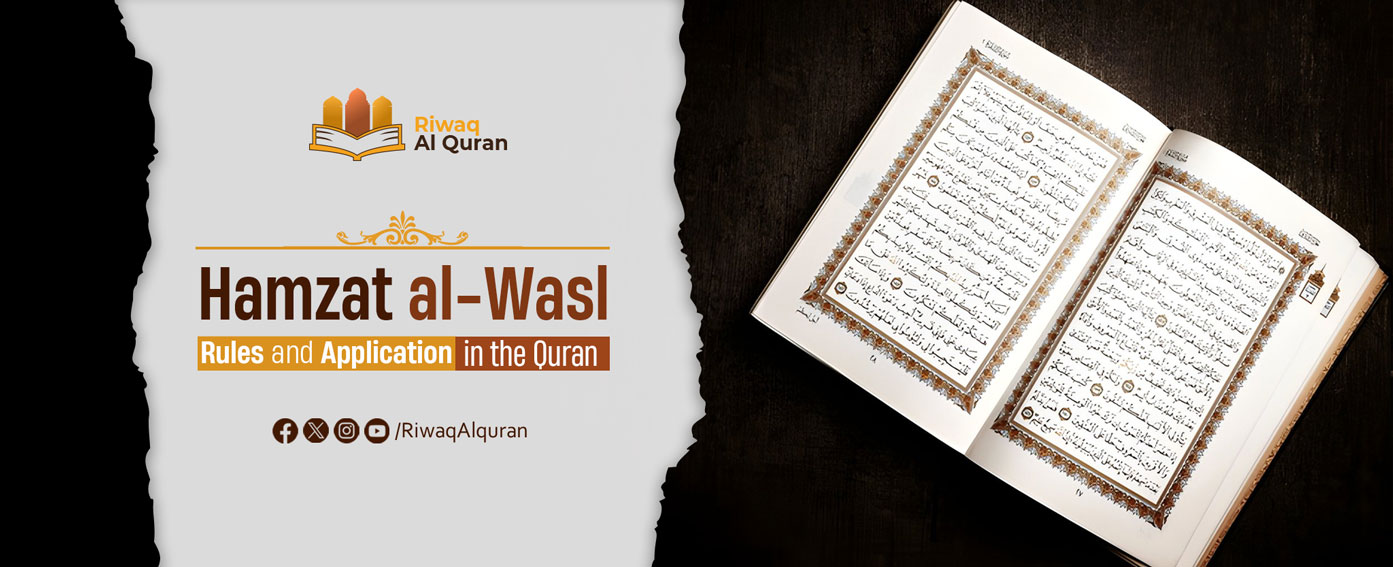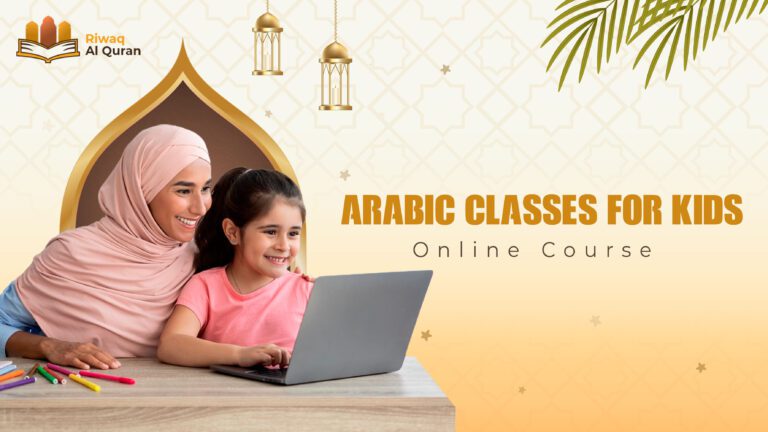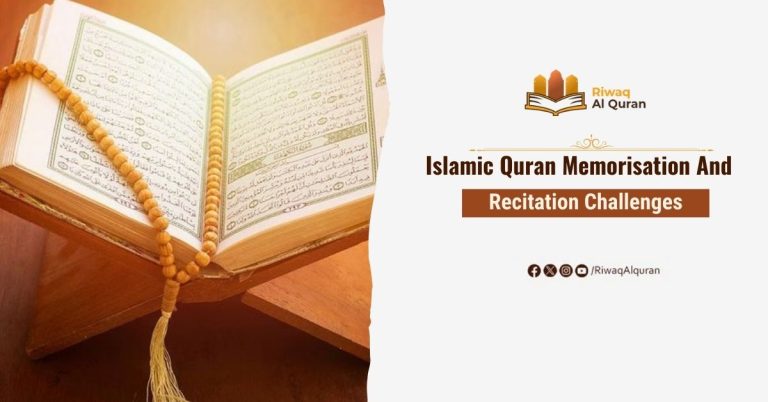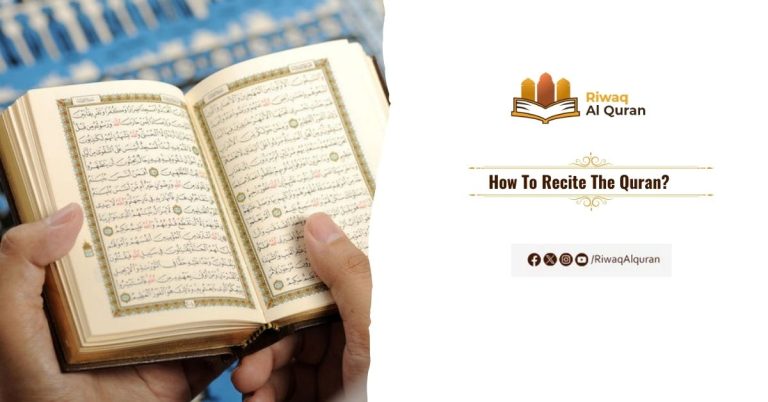Hamzatul Wasl ensures seamless pronunciation in Arabic by appearing only when starting an utterance. Unlike Hamzatul Qat, it’s unpronounced mid-speech and is often represented by a plain Alif. Found in specific nouns, verbs, and the definite article “Al,” it adapts to nearby vowels for smooth transitions, distinguishing it from the pronounced Hamzatul Qat.
Hamzatul Wasl in the Quran is the connecting hamzah, which is at the start of the word. It occurs at the beginning of the word in three places: nouns, verbs, and participles. Continue reading this blog to learn more about it, such as how to start Hamzatul Wasl or read it correctly.
Table of Contents
What Is the Hamzatul Wasl?
Hamza Al Wasl represents the hamza that connects or joins. The definition of Hamzatul Wasl is a non-phonemic glottal stop produced automatically only if at the beginning of an utterance, otherwise assimilated.
Hamza, on its own, represents hamzatul qat (هَمْزَة الْقَطْع). It means hamza that ceases, breaks, or halts and it is a phonemic glottal stop unlike Hamzatul Wasl (هَمْزَة الوَصْل). Hamzatul Wasl meaning is hamza which connects or joins. It is a non-phonemic glottal stop produced automatically only if at the beginning of an utterance, otherwise assimilated.
Though hamzatul Wasl can be written with a sign like ٱ, it is normally indicated by the plain Alif without a hamza. It occurs in some short words with two of their three-consonant roots apparent like ism (اسْم), ibn (ابْن), imru (امْرُؤ), ithnani (اثْنَانِ).
Also, it occurs in some taken words that begin with consonant clusters, imperative verbs of forms I and VII to X, and the perfective aspect of verb form VII to X and their verbal nouns. It is not pronounced following the vowel (البَيْتُ الكَبِير).
This event occurs at the starting of a noun following a preposition, in the definite article, or a verb following a relative pronoun. If the definite article “Al” is followed by a sun letter, l- also gives way for the next letter for lām to be accepted.
Do not forget to check Arabic Sun and Moon Letters, which are related to today’s topic!
How to Pronounce Hamza?
The rules for pronouncing Hamza differ based on its position in a word: initial, medial, or final. Each position follows specific guidelines for how the Hamza should be written, influenced by the surrounding vowels and letters. Here’s a breakdown:
1. If Hamza Is Initial:
- Alif maddah will occur if the letter following the hamza is an alif itself like آكُل.
- Hamza is written over an Alif if the following letter is a short vowel, Fathah like (أَفْرَاد) or Dammah (أُصُول).
2. If Hamza Is Medial:
The seat of hamza is decided usually by what follows if a long vowel precedes:
- If u or i follow, Hamza is written over ya or waw accordingly.
- Or else, the hamza would be written on the line.
Or else, both preceding and following vowels affect hamza:
- In the case of a single vowel, that vowel determines the seat (alif, ya, or waaw).
- In the case of two conflicting vowels, i comes before u, u over a.
- If appropriate, alif maddah occurs.
3. If Hamza Is Final:
- Hamza is written over alif, waaw, or ya, corresponding to the short vowel.
- Hamza is written on the line in شَيْء.
Another important topic related to Hamzatul Wasl is the Rules of Laam Shamsiya and Laam Qamariya when we connect and drop letters for seamless recitation.


Experience Riwaq Al Quran Classes
Watch real moments from our live sessions at Riwaq Al Quran and see how we bring learning to life. These clips highlight our interactive, student-focused approach designed to keep learners engaged, motivated, and actively involved in every step of their educational journey.
Hamzatul Wasl Rules
The rules for writing hamza vary between languages, even if the writing depends on Arabic abjad. Here are some Hamzatul Wasl exceptions:
1. Hamzatul Wasl in the beginning
It always occurs over (أ for ʾa- or ʾu-) or under (إ for ʾi-) an alif. This diacritical mark is essential to distinguish between different vowel sounds that change the meaning.
2. Medial Hamza Wasl
It will either have a seat or be written alone:
- Vowels nearby establish the seat of hamza with prior long vowels.
- In special cases, āʾa, ūʾa, and awʾa need hamza on the line.
- i- (ئ) above u- (ؤ) above a- (أ) if there are two conflicting vowels.
- On the line (ء) if there are none.
3. Final Hamza Wasl
It will either have a seat or be written alone:
- It has a seat matching the short vowel for words ending in the short vowel.
- Alone on the line when preceded by a long vowel or consonant.
4. Two adjoining Alifs
It is not allowed to have two Alifs next to each other in Arabic script. If such a combination occurs, the Alif in the middle is replaced with Alif Maddah (أ). This rule is followed to maintain the standard Arabic orthography and prevent redundancy.
Read more about: Tafkheem And Tarqeeq Of Letters In Tajweed
The Cases of Hamza-Wassl:
There are certain cases for hamza-wassl whether in particles, verbs, or nouns, as follows:
1- The Particle “ال”, the Definite:
You can see hamza-wassl in the particle, only in the definite “ال” (the) that we add to the certain nouns we are meaning, or referring to. When starting with it, we pronounce it clearly as a hamza, while skipping that hamza-pronunciation when being in the middle of a sentence.
Example:
الكتب /Al Kuttub/ (the books)
أحب قراءة الكتب /ohibu Qir’aatul Kuttub/ (I love reading the Books)
2- The Nine Nouns of Hamza-Wassl:
In Arabic, there are nine known words in Arabic with hamza-wassl:
| اِبن /ibn/ – “son” | اِبْنَة /ibnah/– “daughter” |
| اِثْنَانِ /ithnāni/– “two (masculine)” | اِثْنَتَانِ /ithnatāni/– “two (feminine)” |
| اِمْرُؤ /imru’u/– “man” | اِمْرَأَة /imra’ah/ – “woman” |
| ايْمُ الله /aymu Allāh/ – “by Allah” | ايْمُنُ الله (aymunu Allāh) – “by the oath of Allah” |
اِسم /ism/ – “name”
3- Verbs of Hamza-Wassl:
There are various examples of verbs including hamza-wassl, according to the verb-form:
A. Three-Roots Imperative Verbs:
Commands with three-roots verbs in Arabic, starts with hamza-wassl:
Example: افعل /iff’al/ (do)- اشرب /ishrab/ (drink)- اسمع /isma’/ (listen).
B. Five-Letters Past, and Command Verbs, and Verbal Nouns:
In Arabic, whether the verbal nouns of the five-letter verb, or its past or command forms-all have the hamza-wassl at its beginning:
Example: اجتهد /ijjtahada/ (exerted efforts)- past of five-letters’ verb.
اجتهد /ijjtahid/ (exert efforts!)- command of five-letters’ verb.
اجتهاد /ijjtihad/ (exerting efforts)- verbal noun of five-letters’ verb.
The starting alif-wassl makes it easier to pronounce that following cluster of consonants.
C. Six-Letters Past, and Command Verbs, and Verbal Nouns:
In Arabic, the verbal nouns, and past and command verbs of those six-letters’ form include alif-wassl at its beginning, as follows:
Example: استشار /Istashara/ (asked for a consult)- past of five-letters verb.
استشِر /Istashir/ (ask for a consult)- command of five-letters verb.
استشارة /Istisharah/ (asking for a consult)- verbal noun of five-letters’ noun.
Hamzatul Wasl Examples in the Quran
There are many examples of hamza-wassl in the Holy Qur’an; let’s show an example of each case, as follows:
- The Particle of Alif-Wassl in the Definite: ذلك الكتاب /thalikal kitabu/
- The Command of the Three-Letters’ Verb, and that of Five-Letters: كلا لا تطعه واسجد واقترب kala la tute’hu wassjud waqtarib/.
- Verbal Noun of five-Letters’ Verb: ينفقون أموالهم ابتغاء مرضات الله /Yunfiqqoona amowalahumu bitighaa’ marddati illah/.
- Past and Verbal Noun of Six-Letters’ Verb:(واستكبروا استكبارا) /wasstakbaru isstikbara/
The Quran contains numerous examples of Hamzatul Wasl, which appear in various contexts to ensure smooth recitation. Below are some examples of its occurrences:
Example 1: وَٱسْتَعِينُوا۟ بِٱلصَّبْرِ وَٱلصَّلَوٰةِ
In this verse, the Hamzatul Wasl is in the word ٱسْتَعِينُوا۟. When starting directly from this word, the Hamzah is pronounced with a kasrah, as Istai’inoo. However, if recited in continuation, the Hamzah is omitted, allowing the recitation to remain uninterrupted.
Example 2: ٱبْنَ مَرْيَمَ
The Hamzatul Wasl in ٱبْنَ is pronounced when the word begins the recitation, as Ibn-a Maryam. However, when linked to the previous words, the Hamzah is dropped, and the recitation merges smoothly into the following letters, emphasizing fluidity in recitation.
Example 3: وَٱلضُّحَىٰ وَٱلَّيْلِ إِذَا سَجَىٰ
The Hamzatul Wasl in ٱلضُّحَىٰ is pronounced as Ad-Duhaa when starting the verse. But when linking with the previous verse, the Hamzah is not pronounced, creating a seamless transition between the words.
Example 4: فمن اعتدى بعد ذلك
In Surah Al-Baqarah (2:178), “اعتدى” is preceded by “فمن.” The Hamzat Al-Wasl in “اعتدى” is not pronounced, allowing the recitation to flow smoothly as “فمنِ اعتدى بعد ذلك” with the kasrah on the “ن” in “فمن” connecting directly to the “ع” in “اعتدى.”
Example 5: قل ادعوا الله أو ادعوا الرحمن
In Surah Al-Isra (17:110), “ادعوا” follows “قل.” The Hamzat Al-Wasl in “ادعوا” is silent, and the recitation connects directly as “قلِ ادعوا الله” with the kasrah on the “ل” in “قل” joining the following word without a break.
Example 6: وقال ارجعوا إلى أبيكم
In Surah Yusuf (12:81), “ارجعوا” is preceded by “وقال.” The Hamzat Al-Wasl in “ارجعوا” is not pronounced, so the recitation flows as “وقال ارجعوا إلى أبيكم” seamlessly transitioning from the “ل” in “وقال” to the “ر” in “ارجعوا.”
There are four types of verbs, each type depending on the number of letters making up the essence of the verb. There are three-letter basic verbs, four-letter, five-letter, and six-letter verbs. Hamzatul Wasl can begin past tense verbs with five and six-letter verbs. Its example can be seen in the following Quranic verse:
What Is the Difference Between Alif and Hamza?
To some grammarians, alif (ا) and hamza (ء) are two distinct letters, while others see them as two realizations of the same letter. It is a complex aspect of Arabic writing and is usually confusing to both native and non-native speakers.
At the starting of any word, alif and hamza are written together to make the glottal stop sound. We can associate them with a short vowel. When alif comes with a short a or o, hamza is written over the letter. And, when alif comes with a short i, hamza is written below the letter. For example, father (أَب), mother (أُم), Islam (إسلام).
At the starting of some words, hamza should not be written on the alif. This is what we call hamzatul Wasl (همزة الوصل). For example, in words like two (اثنان), Monday (الاثنين), woman (امرأة), etc. The alif at the start of the definite article (ال) must not be written with a hamza. When two alifs are written at the starting of the word, a special type of alif is used with a different shape of hamza. For example, hopes (آمال), Adam (آدم), and sorry (آسف).
A hamza is written in the center of the word in association with a short vowel with a short a (أ), short o (ؤ), or a short i (ئـ). For example, the words ask (سأل), enquirer (سائل), and question (سؤال). The special type of alif can also occur in the middle of the word, e.g., Quran (قرآن).
Here is another explanation of their difference. The true alif is a Sakin letter after Fathah as in the word كَمَا. Some also list the letter alif as لَا in the Arabic alphabet to make clear that it is always preceded by Fathah and is Sakin. The regular hamza هَمْزَة الْقَطْع is a letter that looks like the head of the letter and is pronounced from the deepest part of the throat. It can be written above or below different letters as the holding place for hamza, not part of the letter. One of the letters on which hamza can sit is the alif like in أَنْعَمْتَ. It can also be written on waaw’ like in يُؤْمِنُونَ.
All in all, hamzatul Wasl is usually mistaken for alif. Though alif and the connecting hamzah are lines, there is a particular calligraphic difference that helps a reciter differentiate the two. The letter alif has a hamza over or below, or has nothing at all, whereas Hamzatal Wasl has a little Suad drawn above it like صـ.
Read morea bout: What are the Leen Letters?
Tanween Followed by Hamzatul Wasl
When reciting the Quran, proper connection between words ensures fluency and adherence to Tajweed rules. One such scenario occurs when a word ending with Tanween is followed by a word beginning with Hamzatul Wasl. Here’s how this transition is managed:
Rules of Hamza Pronunciation
When a word ends with Tanween (ً, ٍ, ٌ) and is followed by a word starting with Hamzatul Wasl (ٱ), the Hamzatul Wasl is dropped during continuous recitation. To maintain fluency, a Kasra is added to the sound of the Tanween, making the transition smooth.
Example in Recitation
For instance, in رَجُلٌ ٱسْمُهُ, the Tanween on رَجُلٌ flows into the next word with a Kasra, resulting in the recitation: رَجُلٍ اسْمُهُ (pronounced as Rajulin ismuho). This adjustment ensures smoothness while preserving the rules of Tajweed.
Hamzatul Wasl Worksheet
Understanding the rules of Hamzatul Wasl is essential for proper reading and recitation, especially in Quranic Arabic and classical texts. This worksheet will guide you through identifying, pronouncing, and applying the rules of Hamzatul Wasl in different contexts.
Exercise 1: Identify Hamzatul Wasl
Underline the Hamzatul Wasl in the following words and indicate whether it will be pronounced or silent in context.
- ٱلْكِتَابُ
- ٱسْتَغْفِرْ
- وَٱبْنُهُ
- ٱئْتُونِي
Exercise 2: Rewrite the Sentences
Rewrite, removing the Hamzatul Wasl where it should not be pronounced:
- وَٱبْنُهُ كَانَ فِي ٱلْمَسْجِدِ.
- فِي ٱلْمَدْرَسَةِ أَدْرُسُ.
- وَٱسْتَغْفِرْ رَبَّكَ.
- بِٱسْمِكَ نَبْدَأُ.
Exercise 3: Read and Connect
Indicate whether the Hamzatul Wasl is pronounced or silent:
- في ٱلْمَسْجِدِ
- قُمْ وَٱكْتُبْ
- بِٱسْمِكَ ٱللَّهُمَّ
- وَٱسْتَغْفِرْ رَبَّكَ
Exercise 4: Application in the Quran
Read the following Quranic ayah and identify all Hamzatul Wasl instances:
اهْدِنَا الصِّرَاطَ ٱلْمُسْتَقِيمَ
- How many Hamzatul Wasl do you see?
- Are they pronounced or silent?
Comparison Between Hamzatul Wasl and Hamzatul Qat’
Here is a comparison between Hamzatul Qat’ and Hamzatul Wasl, two types of Hamza that differ in their pronunciation, writing, and usage in Arabic. While both serve important roles in the language, they are used in different contexts and have distinct characteristics. The following table highlights the key differences:
A summing-up comparison will be great to highlight the differences between hamza-wasl and hamza-qat’:
| Hamza-Qat’ | Hamz-Wassl | |
| Indication | “Cutting Hamza” | “Connecting Hamza” |
| Pronunciation | Always pronounced, wherever its position in word, or sentence. | Pronounced only at the beginning of speech or after a pause, and skipped when connected. |
| Position in word | Can appear anywhere: beginning, middle, or end. | Only at the beginning of a word. |
| Written Forms | أ ، إ ، ؤ ، ئ | an alif (ا) without a hamza. |
| Effect on Recitation | creates a clear, abrupt sound of hamza. | creates a smooth connection between words. |
| Examples in Nouns | أَحْمَد (Ahmad), إِيمَان (iman – faith) | ٱسْمٌ (ismun – a name). |
| Examples in Verbs | أَكَلَ (akala – he ate) | اُ ٱقْرَأْ (iqra’ – read!) |
| Examples in Particles | إِنَّ (inna – indeed) | ٱلْ (al – the definite article) |
| Quranic Examples | قُرْءآنٌ (Quranun – Quran). | ٱلله (Allah – God) |


Why Students Love Learning with Riwaq Al Quran
Hear directly from our students about how Riwaq Al Quran Academy has transformed their connection with the Book of Allah. Their experiences reflect the dedication, care, and quality that guide every step of our teaching.
Best Online Tajweed Course
Learning about Arabic letters is extremely important for Muslims. To help our Muslim brothers and sisters, Riwaq Al Quran offers you the best Online Quran Tajweed Classes that cover such topics. Some questions might pop up regarding Hamzatul Wasl: How do we use Hamzatul Wasl after Tanween? How do you pronounce Hamza Al Wasl?
The answers to all these questions are handled in our courses. Students also get to practice it using the Hamzatul Wasl worksheet. So, if you, or your kids, are up for learning about Hamzatal Wasl, join our family now!
We offer several courses such as:
- Online courses for kids.
- Online Quran classes for kids and adults.
- Online Arabic courses
- Online Ijazah courses
- Online Islamic Studies courses.
Here are a sample of our set of Quran Courses that will be helpful for you:
- Online Tafseer Course: Delve into Quranic meanings with our insightful online Tafseer course.
- Noorani Qaida Online: Learn Quranic basics efficiently through our Noorani Qaida online program.
- Online Quran Recitation Course: Enhance Quranic recitation skills through our expert-led online course.
- Online Tajweed Classes: Master Tajweed rules for beautiful Quranic recitation in online classes.
- Quran Memorization Online Course: Memorize the Quran effectively with our specialized online memorization course.
- Online Qirat Course: Explore diverse Qirat styles with our comprehensive online Qirat course.
Online Quran Classes for Kids: Nurture a love for the Quran in kids through interactive online classes.
Conclusion
Hamza Al Wasl is crucial for proper Arabic pronunciation and Quranic recitation. By recognizing when it should be pronounced or omitted, and following the rules of its placement in different word positions, one can ensure smooth and fluent recitation. Whether in the beginning of nouns, verbs, or participles, Hamzatul Wasl plays a vital role in maintaining the harmony of the language.
With practice, especially through exercises and worksheets, mastering this concept becomes achievable. For those looking to deepen their knowledge, enrolling in a comprehensive Tajweed course is a great way to improve recitation and understanding of such essential topics.
True is that some may mix up between hamza-wassl and hamza-qat’, yet with a full understanding of a comprehensive comparison with lots of practice will be enough for differentiating between them clearly. You can learn even more of tajweed techniques in Riwaq Academy! Join us!


































